#urban forager
Explore tagged Tumblr posts
Text







Skate + Forage. Liberties Festival, Dublin 8. July 2024
0 notes
Text

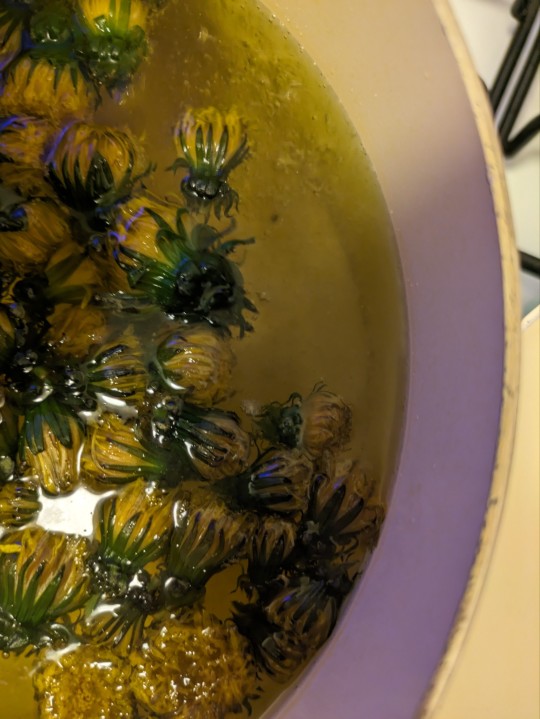
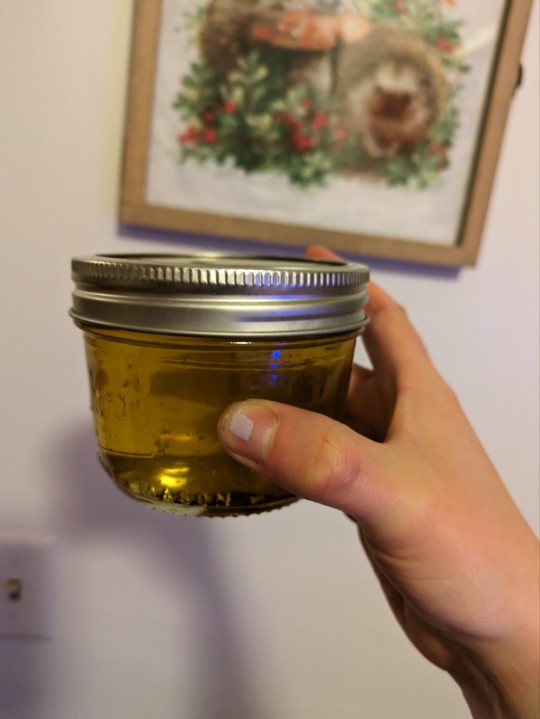
Dandelion jelly turned out amazing so far even though a bunch of my neighbors mowed before I could get to them 😔 but look how pretty! And tastes a lot like honey mmm 🍯🌼
#jelly#dandelions#flowers#forage#foraging#urban foraging#wildflowers#jams and jellies#homemade#canned#canning#cooking#nature#naturecore#western ny#western new york#finger lakes#upstate new york#upstate ny#may#may 2024#spring#spring 2024#2024#me#mine#pictures#images#gold#golden
225 notes
·
View notes
Text

#Crow#Bird Photography#Wildlife Photography#Corvids#Black Bird#Nature Photography#Urban Wildlife#Intelligent Birds#Foraging Birds#MissedMileMarkers
75 notes
·
View notes
Text

The blackberries are growing!
Old Market, Bristol, July 2024
#photography#cottagecore#urban cottagecore#blackberries#foraging#blackberries are one of the few things I know how to forage for#learned from my archaeology prof on field school#bristol
143 notes
·
View notes
Text
in case anyone's interested, the first attestation of "shoplift" in print is as far back as 1585 in a description of terms for different kinds of nicking stuff
Note that ffoyste is to cutt a pockett, nyppe is to cutt a purse, lyft is to robbe a shoppe.
anie waie if thou seest some one shoppelyfting, nay, i'faith thou didst not so
100 notes
·
View notes
Text
Today my partner and I went out with a ladder and harvested mulberries in the neighborhood, I finally worked up the nerve after 4 years of watching fruit fall all over the road to ask if I could bring a ladder and do a proper mulberry harvest. My neighbors told me to have at it! So we got a tarp and shook branches we got almost half a gallon.
Then since we had the ladder out we stopped by the loquat/biwa trees on the way home and picked over 3 gallons of those since they were perfectly ripe and dropping.
Now I've made 2 quarts of mulberry syrup and a loquat curd. My partner made up a shortbread crust so we can have loquat bars and I'm making red fruit tea with syrup to have with the bars 💜
We have so many more loquats tho and I didn't realize how egg heavy fruit curds were so I'm on the fence about how to process our loquats, some jam could be good but canning is a fussy process, we could juice it or maybe make sorbet? I'm open to loquat use suggestions
You gotta make em fast tho cuz we spent 30 min just standing over the rink juice running down our chins inhaling loquats and I think we could possibly eat them.all in the next week if we give into the goblin fruit bounty urges
56 notes
·
View notes
Text
Foraging for Witchcraft
One of the great things about foraging specifically for Witchcraft is that you're not restricted to just edible things. You can forage/find stones, clay, bones, herbs, water, fruits and vegetables, wood and more.
I've made a post previously about how important low-cost Witchcraft is. So consider this a follow-up of things you can find for your practice that are completely free.
Some useful tools that are simple to forage if you are near the sea:
-Sea salt
Just gather filtered sea water in a pot and boil until salt crystals form. Then put the salt on a baking tray and either leave to sun dry or put it in the oven. You can also make infused salts and black salt like this
-Sea shells
They are common for love workings but are also great for protection, grind them up and use them in a protection salt (obviously not one you're going to eat)
-Sand
Often used for ritual magic, especially dyed sands. Also good for spell bags, planting certain plants, keep it in Jars or boxes and Bury things in it for a freezer spell.
-Stones and crystals
Of course I love flint, but there are many different stones based on your geographical location that will be good for Witchcraft. Quartz is great for protection, it doesn't have to be clear in order to work. White quartz is just fine.
-Sea glass
Sea glass is such a great form of protection, with colours from green to blue to brown and even a very rare red piece. Being infused with the ocean's energies really makes it special.
Some tools that are simple if you live near a forest/wooded area:
-Branches
Fallen branches can work as wands, divining rods, kindling for a fire, and depending on the type of wood they have different associations. You can make your own broomstick from collecting enough branches.
-Moss
Moss is often overlooked in magical practice, but it is an amazing type of plant that you can grow in a jar terrarium or dry and use in spell work. It is often the first thing to grow over dead wood or old stones, and as such it is Hardy and useful for hard times and new growth.
-Plants
So, so many different plants. Some edible plants like wild garlic have great uses in kitchen witchery, some poisonous plants like hemlock can be an amazing kick to your death work or baneful practice. What plants you can Forage will depend on your local area.
-Bones
Animal bones are a beautiful way to incorporate death and life into your practice. I usually let the Bones that want to be used for my practice come to me- if I can't find any more in a spot there used to be loads, I take that as a sign they did not want to be used/found a better resting place. I could do a whole post on cleaning and preparing Bones for your practice but vulture culture on tumblr has you covered.
Things you can Forage if you live in a city:
You may be surprised that I've included urban areas in this list. Most of what you can Forage here is more commonly thought of as rubbish, but it has excellent magical potential nonetheless.
-Broken glass
Excellent for baneful workings and baneful protection magic. Please be careful when collecting it, wear gloves and use a sealed container so no shards escape.
-Coins
Find a penny, pick it up and all the day you'll have good luck. I always keep the pennies I find on the pavement as a token of good luck.
-Beer bottle caps
I love collecting these and putting them in little jars. Corks can do a similar job when it comes to magic- keeping something in that you don't want coming out. Like an urban salt circle. Put a lid on it.
-Weeds
While you might not be in an area with abundant foliage and wildlife, you will undoubtedly be able to find weeds growing in the pavement or on gates and buildings. Ivy has great binding properties, dandelions are great for protection, shamrocks for luck ect.
-Feathers
These are easy to find if you live near pigeons and other birds. Please don't pick it up if there is a bird flu outbreak in your area, and as with bones make sure to wash them before bringing them into your home.
#the warlock speaks#witchcraft#witchblr#for baby witches#witchcraft ideas#urban witchcraft#sea witchcraft#forest magic#foraged magic
81 notes
·
View notes
Text

Giving thanks for life, eyesight, work that I enjoy, all the youth I get to share stories with, laughter and the bitter realty.
#sunrise#forest#urban food systems#urban foraging#tactical urbanism#visionary growing solutions#permaculture#biodynamic#biodiversity#urban ag#maurice small
12 notes
·
View notes
Text

eastern black walnut
#forest#mushrooms#mycology#botanical#botany#plants#flowers#fungi#foraging#forestcore#native plants#native wildflowers#fairycore#urban foraging#foragers#fairy grunge#botanical illustration#botanical art#street tree#cottagecore
175 notes
·
View notes
Text

So I found this glass bowl outside.. in the trash. I thought it was an oven-safe glass container, in which I could potentially make a casserole, or something equally delicious. It has this interesting flat rim that I haven't seen on glass containers before, and usually these have engraved some sort of logo or brand name on them, but I couldn't find anything like that on this one. Studying it carefully, I only found the letters '22' lightly inscribed on the rim. I compared it to my other oven-safe container, and they're about the same thickness.
Then my roommate came home and I showed it to her excitedly, and first thing to leave her mouth was 'oh it's the washing machine thing!' and I stared at her, then at the bowl. Then I went to the washing machine, and compared them.
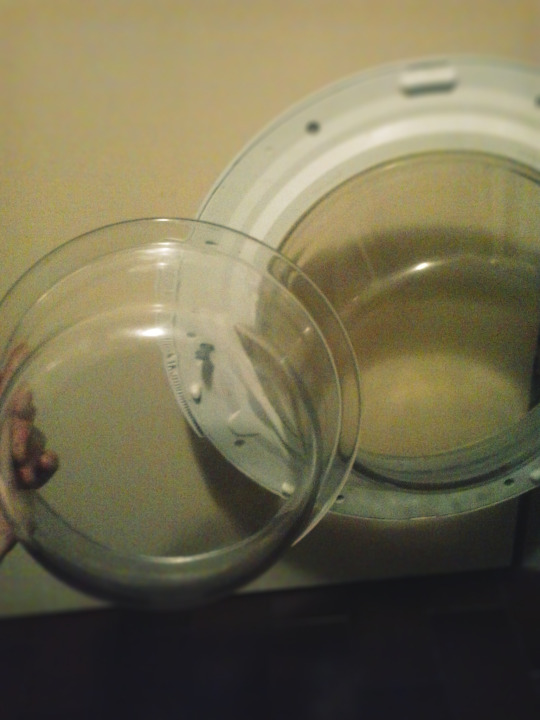
It's almost a complete match. I can't believe this. The found one is a bit smaller, but there are smaller washing machines. The more I looked at it, the more I was sure that it is in fact, a piece of a washing machine. I really found a piece of washing machine outside in the trash?? The number 22 maybe referred to the size of it?
Now I'm pretty sure that it is a piece of a washing machine.. but the curiosity is killing me.. could you still make a casserole in it? I know not all glass containers are the same, and if you put not-oven safe glass in the oven, it could explode, and I do not want to clean glass out of my oven, or deal with the potential consequences. Is there anyone smart enough to know, can this be done? Is it just glass and it can be used in an oven?
If it's not fire-safe, I can still use it as a salad bowl, with added amusement that its original purpose was to enable me to look at the washing machine whirling the laundry around.
26 notes
·
View notes
Text
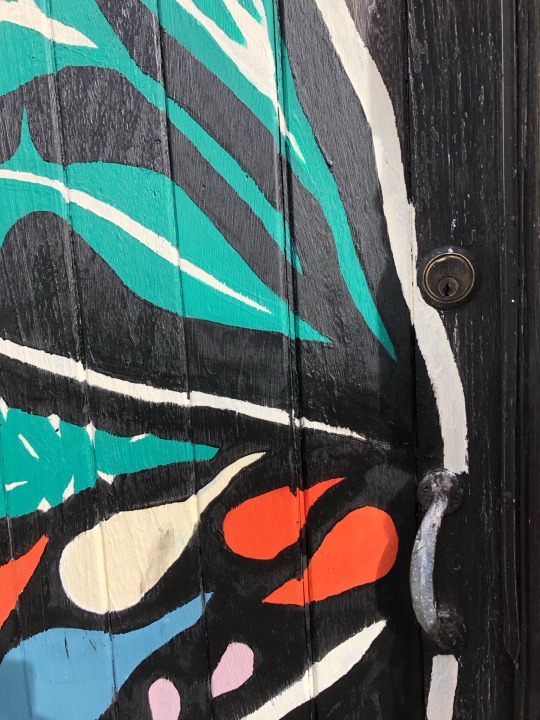

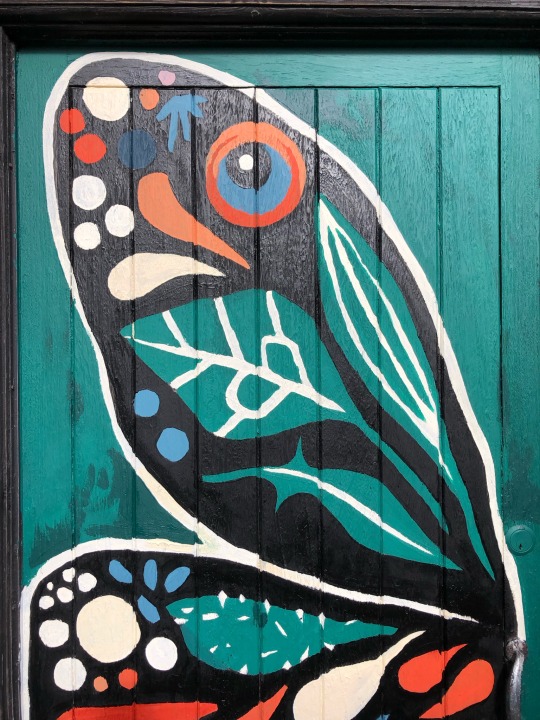
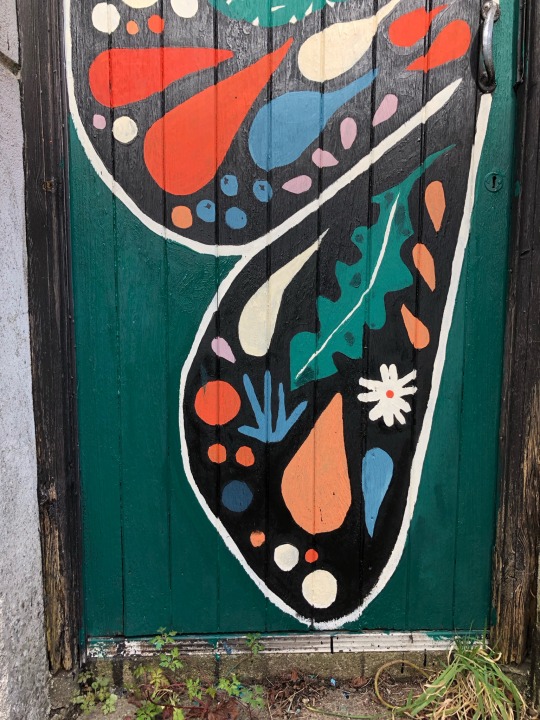
1 note
·
View note
Text

161 notes
·
View notes
Text



From an invasive plant to delicious pesto
I feel magical
✨️they/them✨️
#me#pale#ginger#redhead#nonbinary#piercings#undercut#queer#tattoos#urban foraging#foraging#garlic mustard#pesto
32 notes
·
View notes
Text

Went scootering with Mandana and Hubbins. We happened upon some ripe pawpaw and Hubbins was just tall enough to get them.
12 notes
·
View notes
Text
Tips for foraging inside city limits!
For those who don't know me, I've been foraging my whole life, and while I started off down a gravel road and backed up to timberlands, I now live less than a block from a strip mall.
The first thing to know about foraging in city limits is that there's way more wonderfully tasty food growing for free than you'd think.
The second thing to know is that you'd better wash your food and make sure you're not harvesting from a superfund site unknowingly.
The third thing to know is that there's a little more networking involved than when you're foraging "undeveloped" land.
Getting started:
There are two keys to successful urban foraging: you need to get to know the area, and you need to get to know the plants.
I strongly recommend developing a walking (or wheeling) habit. As a forager, you're going to want to get familiar with the individual plants in your area, and you just can't do that at the speed a car or bus moves. Make note of the potential plants, and watch how they're growing and yielding from one year to another (pear trees, for example, are famous for being alternate year barers- meaning if they have hardly any this year, they might have a bumper crop the next).
You also need to learn the plants- in urban areas I tend to focus on foraging from invasive species, and agricultural species that I know grow prolifically where I am. Check your local invasive species, and see which are edible. In my area, Himalayan blackberries are very invasive, and pretty darn good. No one is going to mind you picking Himalayan blackberries, because they are so prolific that there will always be more. Different areas will have different edible invasive species, and it pays to learn them.
I recommend going to a plant nursery and seeing which fruiting trees, bushes, and shrubs do well in your area and bare prolifically. People often plant a tree, and then years later, they realize it produces enough for five families, and they'd love for someone else to come pick. Or someone planted a tree decades ago, and now someone else lives there and doesn't care for the fruit. Sometimes, they even pick the fruit for you and put it out with a little free sign. I've also had great luck asking. Usually, people are more than happy for you to take some because to them, it's just a mess. I've also had good luck posting to local gardening groups on Facebook, or buy-nothing groups, or Craigslist, or putting up flyers that say something along the lines of "I'll come pick your fruit and leave you a portion" or "let me pick your fruit and I'll make you a crumble". That usually gets me more than I want.
Places to forage:
Peoples' yards: While you're wandering around, observe which fruits and nuts in your area are so prolific that loads go to waste. Here, it's usually apples, pears, figs, blackberries, raspberries, plums, walnuts, chestnuts, and acorns. Complement (authentically) people on their yards when you see them, gardeners are enthusiastic and generous and love enthusiasm from others. Be authentic in your appreciation, though, and don't expect anything. Part of what you're doing is building connections and recognition. If they offer you something, be excited and thankful, and they might tell others about you when excess food comes up. I've indirectly gotten apples, figs, peaches, plums, and walking onions this way. I've also written notes and left them in mailboxes before, and I have had some success just straight up asking about figs and apples. I've even gotten foraging permission by being an enthusiastic young person at a gardening club, class, or show.
Back alleys, overgrown fences between public and private spaces, corporate grounds that someone planted and forgot about: is obvious when food isn't wanted or cared for. If there are pounds of fruit or nuts laying on the ground, and some has already gone bad, and it's in a public area, I say go for it. I'll often pick up the bad ones too, and bring them home to compost, just to make the area nicer for others.
College campuses: often edible species get planted because they're pretty, and no one cares if you pick up the nuts or fruits. It pays to learn some unusual edibles. I've gotten strawberry tree fruits, edible dogwood, and ginko this way. Sometimes they've got demonstration gardens, and they want people to take the food. It is worth it to ask.
Some examples from within short waking distance of one bus route in a town:
These are Himalayan blackberries.

These are everywhere. These are very prolific where I am, and if one section is picked clean, there's another 100 feet away that's still loaded.
This is a plum tree.
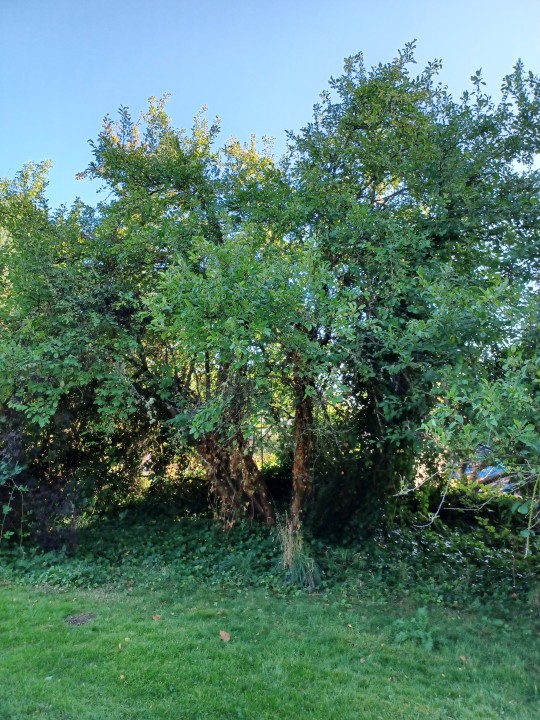
Actually, it's several plum trees, because plums come true from seed and this one has been dropping plums for years. This is in a public park, and probably got started in the neighbor's yard. Every year, I pick dozens of plums from the ground and tree, and every year there are hundreds more that don't get picked.
This is a pear tree:
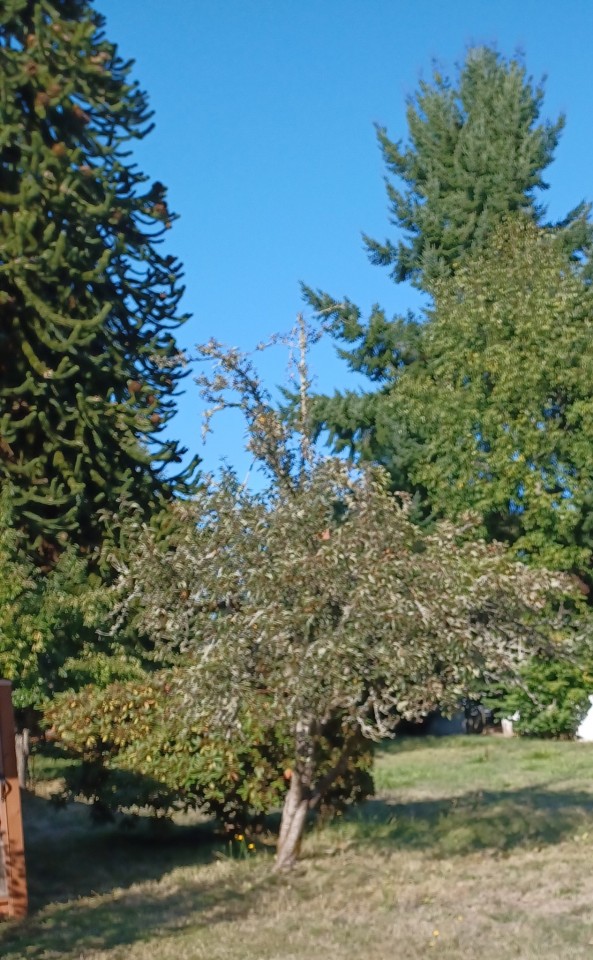
I've gotten permission to pick from this tree before, but this year was a bad year for it. Next year it will probably be loaded, as it has in the past.
This is yarrow.
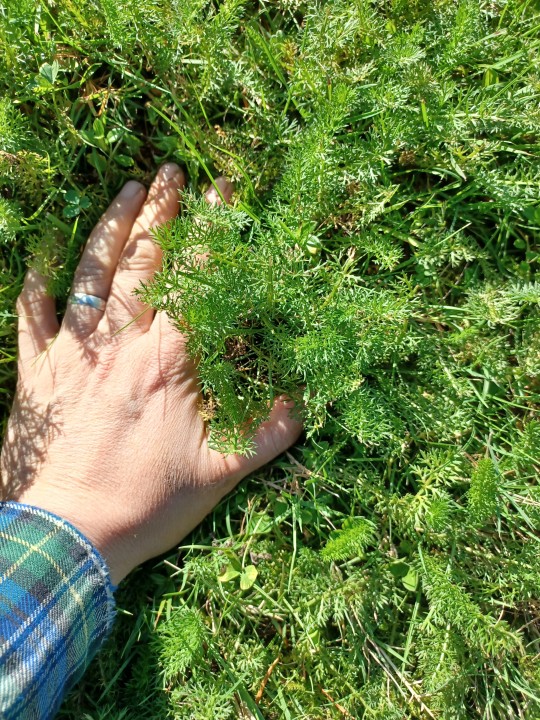
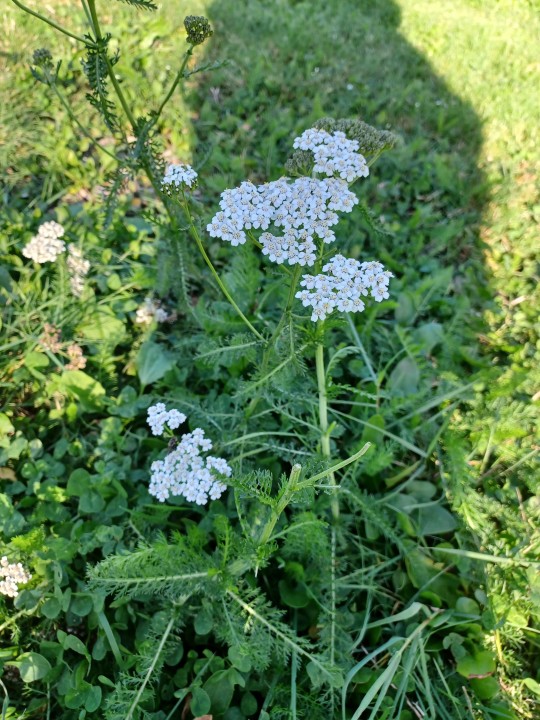
A lot of eco-concious cities are starting to add yarrow to their lawns, because it's drought tolerant, native to North America, and tolerates mowing and foot traffic very well. Also, my city doesn't spray herbicides. Yarrow makes a lovely tea. Also, if you go to the edges of the lawn area, up against trees and shrubs and such, they often don't quite get the edges so you can get the flowers, too. Just be cognizant of how many dogs are likely to have been doing their business and try to pick an unpopular spot.
This is a red currant that someone planted, and someone else did a terrible job of pruning:
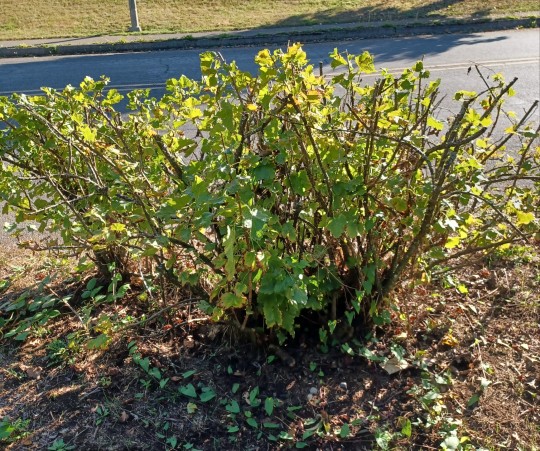
It's in a volunteer park, where people want you to pick the food. I have snacked often on this plant.
These are acorns:

I'm only competing with non-native squirrels for this one. I'm going to try to make something from them this year.
No matter what you're harvesting, never take more than you can use. Learn some ways to preserve the harvest too- freezing and drying are probably the easiest, but canning, jams, and jellies aren't that hard. You will probably end up with more than you need or want if you're anything like me. In that case, buy-nothing groups, gardening groups, and mutual-aid networks are a great way to share the bounty and sometimes set up trades, or get future foraging opportunities.
Hope that helps!
60 notes
·
View notes
Text
It's that time of year again in North America. Found this patch of garlic mustard on a nearby college campus path, so I'm reaching out to their facilities/ landscaping supervisor to see if they'll pull them. Otherwise, I'll be back 🔪 🌱
[Garlic mustard is an edible, highly invasive plant here in my state. The first year plants grow these rosettes of bean-shaped leaves, while older plants have more triangular/heart shaped leaves with sharp points.]
#garlic mustard war 2024#eat invasive plants#kill invasive species#mine#plants#foraging#urban foraging
32 notes
·
View notes